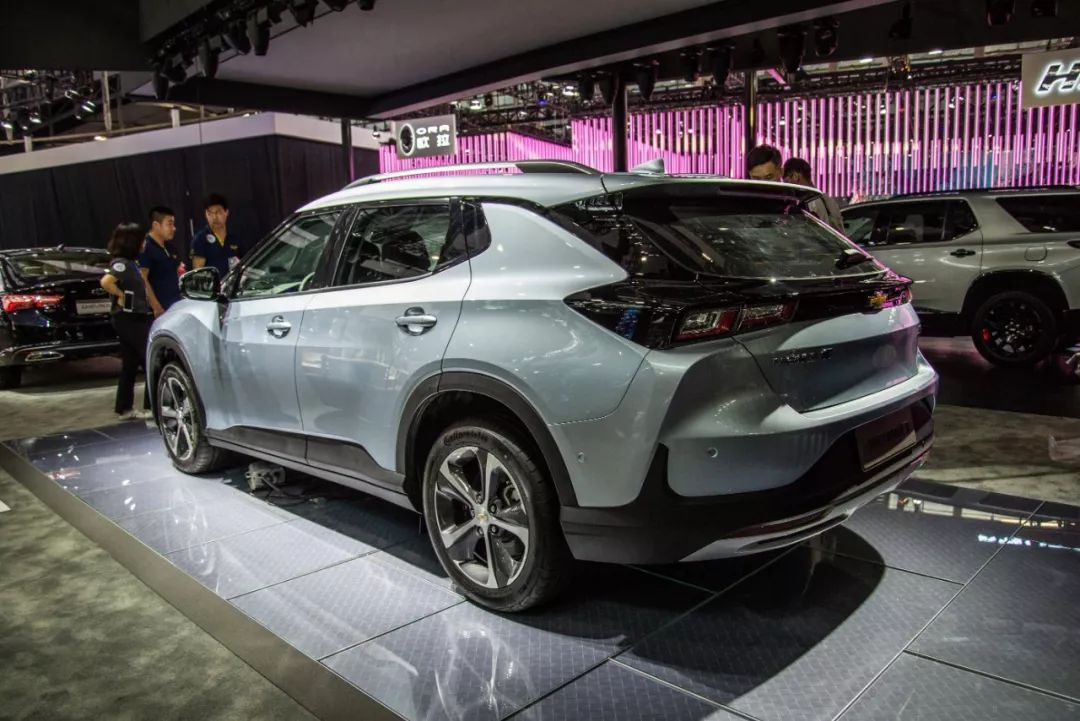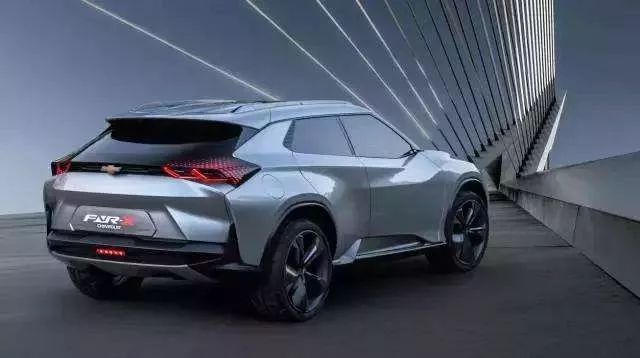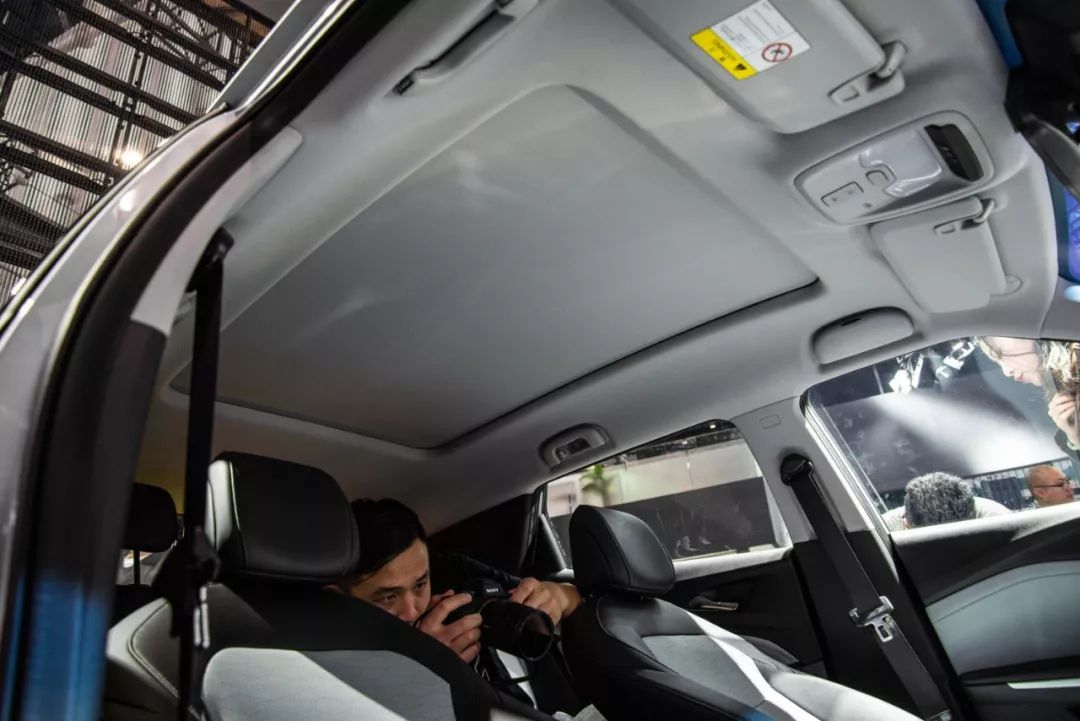On November 8th, the first Chevrolet pure electric car in the Chinese market, the Menlo, was officially unveiled.
As the car has not been officially launched yet, let’s first take a look at the known parameter information:
- NEDC range of 410 km
- Length, width, and height of 466518181538 mm, respectively
- Wheelbase of 2660 mm
- Maximum power of the motor is 110 kW
- Curb weight of 1660 kg
Although the Menlo’s parameter is not as impressive as the 500 km that self-brands or new car makers can achieve, Chevrolet’s positioning for the Menlo is very clear – a pure electric intercity coupe.
Referring to the test results of the Buick Velite 6 extended-range version, which is the Menlo’s sibling, the Menlo can basically meet the commuting needs between cities.
At the Guangzhou Auto Show yesterday, the interior design of the Menlo was unveiled for the first time. We conducted a comprehensive static experience of the car, and if we were to describe it in one sentence, it would be “a familiar formula, but with a different taste.”
Although the Chevrolet Menlo and the Buick Velite 6 have very similar overall dimensions, their styling differences are very noticeable.
The Menlo’s exterior design comes from the FNR-X concept car, using a “muscular three-dimensional streamline” design language for the front, creating a good sporty atmosphere. The headlights also use a full LED light source, enhancing the overall texture.
Coming to the side, Chevrolet Changtu adopts a suspended roof design, coupled with black plastic trim panels on the wheel arches and roof luggage rack, giving the first impression that this is a crossover vehicle.


Changtu continues the classic dual waistline design of the Chevrolet family, with staggered front and rear waistlines extending to the hatchback tailgate, while the blade-shaped body kit runs from the front to the rear, giving a strong sense of power.
In addition, the 17-inch two-color blade-shaped wheels provide a very good visual effect.
As for the tires, Changtu uses 215/55 R17 Maxxis MC5 tires. The biggest performance characteristic of this tire model is to balance grip with quietness and comfort, which is in line with the positioning of a city inter-electric sports car.


At the rear of the car, Changtu still borrows a lot of design elements from the FNR-X concept car. Although not as exaggerated as the concept car, the overall design still has a strong visual impact.

The taillight group adopts an overlapping structure design, and is wrapped in a large size, piano-baked black paint-like material around the periphery. In addition, two raised lines are outlined on both sides of the Chevrolet logo, further increasing the sense of hierarchy and making the tail look more exquisite.

 Enter the car and compared with the dynamic exterior design, the interior overall maintains a universal, friendly design style. However, because Changchun uses black and gray-white contrasting color design, and with the cooperation of multiple materials such as piano baking paint panel, silver decorative strip, the sense of hierarchy is very distinct, and it will definitely not make you feel very old-fashioned.
Enter the car and compared with the dynamic exterior design, the interior overall maintains a universal, friendly design style. However, because Changchun uses black and gray-white contrasting color design, and with the cooperation of multiple materials such as piano baking paint panel, silver decorative strip, the sense of hierarchy is very distinct, and it will definitely not make you feel very old-fashioned.
In addition, Changchun did not redesign a simpler and more technical interior style for being a pure electric vehicle. The instrument panel and the center control screen respectively use 8-inch and 10-inch LCD screens, while retaining a lot of physical buttons.


Simply looking at the overall size, shape, and information displayed on the instrument panel and center control screen, it is almost identical to the Buick Velite.
It is reported that Changchun is equipped with the latest generation of Chevrolet MyLink+ intelligent connectivity system and Anji Star intelligent vehicle connectivity system, which can provide virtual keys, remote control, intelligent voice recognition and other functions.
However, as the on-site display car was not powered on, the on-site staff also told us that the car’s system is still under optimization. So we hope to actually experience this set of car machine system after the delivery of Changchun, and see if there will be any surprises.
After talking about these two screens, let’s get back to the physical buttons in the car.
As Tesla pioneered the era of large screens, touch screens have always been controversial in the car, and it has not stopped until today. But what you can see is that more and more vehicles are using touch-screen interaction solutions, canceling many traditional physical buttons, even the traditional Porsche is using four screens on Taycan.
I believe this is the trend of the future, firstly it can make the interior more technological, secondly, new interaction logic will create endless imagination with the arrival of assisted driving and 5G.
However, there is a premise that the response speed and logic of the large screen must be good enough, otherwise, it will appear somewhat misplaced.

 If it is just for the sake of having a large screen, I think it is more practical to use physical buttons directly. Changxun has all the buttons in familiar positions, which is slightly conservative but at least won’t make mistakes.
If it is just for the sake of having a large screen, I think it is more practical to use physical buttons directly. Changxun has all the buttons in familiar positions, which is slightly conservative but at least won’t make mistakes.

Lastly, let’s turn our attention back to the space aspect, which is what most people care about in a family car. Although Changxun is positioned as an intercity coupe by the official, there is not a very obvious sloping treatment at the rear of the car, so there is no need to worry about headroom in the back seat.

Another good point is that the rear floor of Changxun is almost flat. If three people sit in the back at the same time, the middle passenger will not feel too cramped.

In addition, Changxun has a huge panoramic sunroof on the roof, and with the decent space, there will be no sense of oppression whether in the front or back.


The trunk of Changxun is good in terms of depth and overall height, which is great for this class of car. There are also many storage compartments under the rear trunk cover.
The rear seats support a 4/6 folding ratio, and the rear seats can be folded down to form a very large flat space. The only drawback is that the height of the rear trunk floor is relatively high, which may cause slight inconvenience when placing some heavier items.
Although the price of Changxun has not been announced yet, judging from its sister model Buick Velite, the price of Changxun is expected to be around 170,000 to 200,000 yuan.
For families that already have a fuel car and have conditions to install a home charging station, choosing a pure electric vehicle as the second car is the most suitable. Not only can it greatly reduce the use and maintenance costs of the vehicle, but it can also enjoy a smooth and non-delayed power feeling that electric vehicles provide.
The introduction of the Chevrolet Cruze in the price range of 150,000 to 200,000 yuan provides a new option for those who cannot accept traditional domestic brands or new forces in automobile manufacturing.


-
Is this the pure electric car you want? 7-day in-depth test drive of Buick Velite 6
-
General Motors’ attempt in pure electric vehicles – driving experience in the Buick VELITE 6

This article is a translation by ChatGPT of a Chinese report from 42HOW. If you have any questions about it, please email bd@42how.com.
